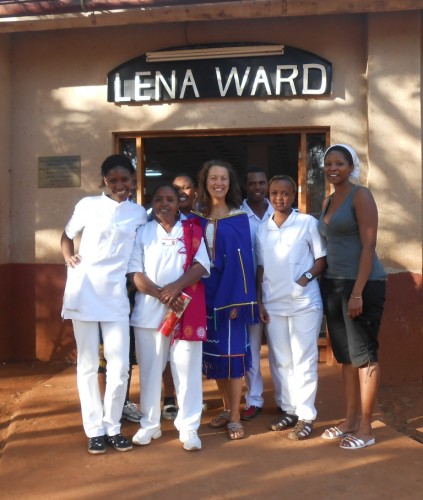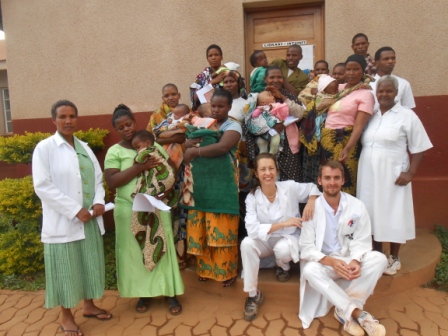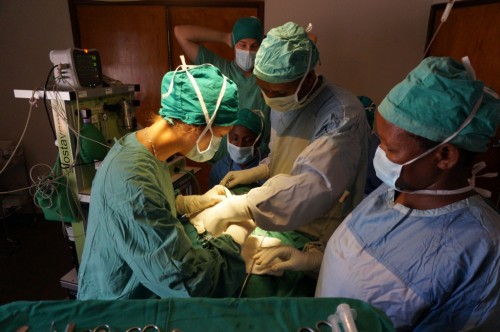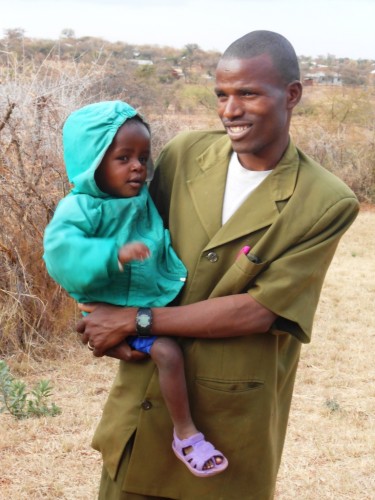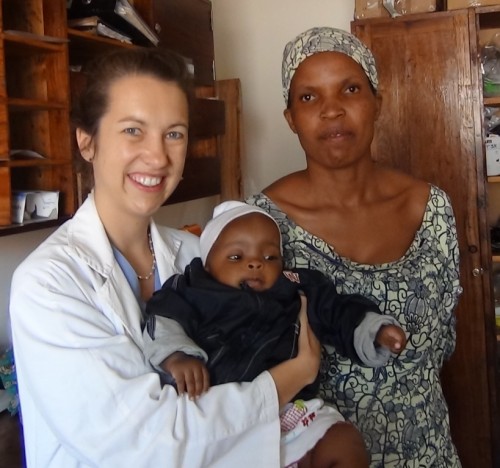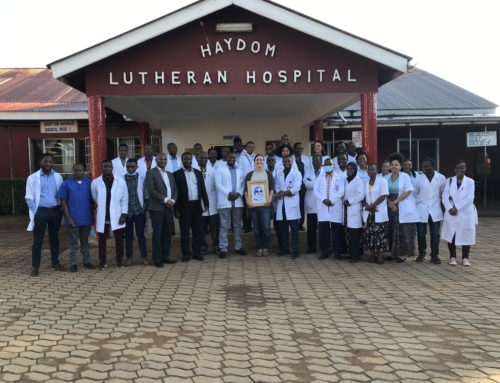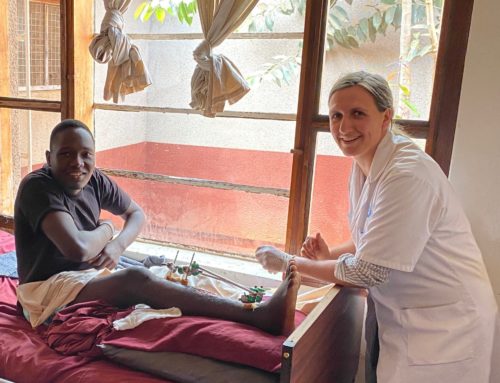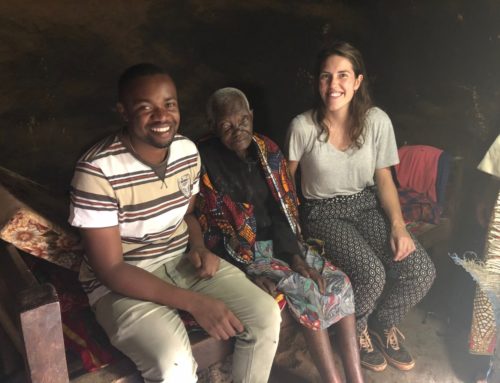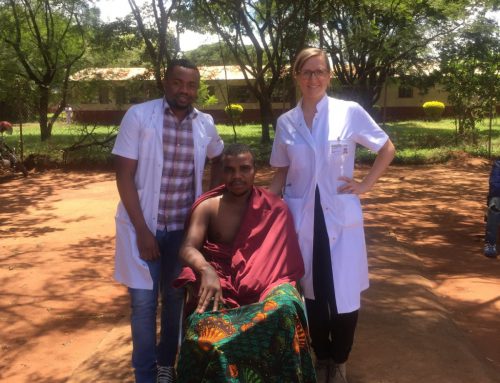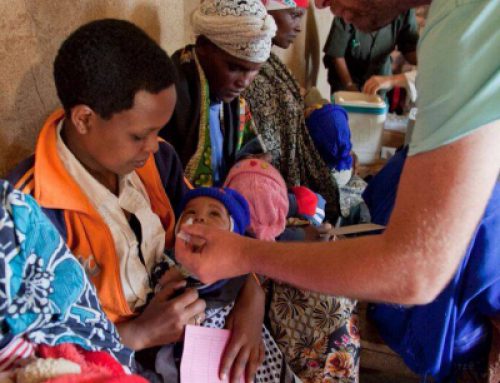Dr. Theresa Harbauer is recent teruggekomen uit Haydom Hospital, Tanzania, waar ze ruim twee jaar heeft gewerkt via onze stichting.
Hieronder haar verhaal…
My goodbye to Haydom came quite fast and felt unreal. I have seen many people coming and going in those two years… And now it was suddenly me leaving! I knew beforehand it was necessary to stay at least two years. You need this time to get used to each other and to establish something together . With all the short-term visitors it is sometimes difficult for the nurses and staff to get used to the different personalities and doctors working there. They all have different opinions, different guidelines, different working attitudes…
The concept of TWEEGA MEDICA Foundation to send western doctors and medical staff to remote hospitals for a period of two years, creates not only enough time to adapt to a new environment but also leaves time to become part of it, while you work. You get the chance to accomplish your own work and furthermore you can build something. There’s time for education and knowledge-transfer. Training the Tanzanian hospital staff is very important because they will eventually be the ones leading the hospital. The hope is to thus create sustainability!
My decision to go to Haydom to work there for two years as a pediatrician was triggered by many different reasons. To name a few: I wanted to give medical support directly, I loved to gain more hands-on medical experience in a tropical country, I wanted to get to know different cultures and the way of living in an African society and above all wanted to help the hospital and staff developing better (pediatric) health care for the people in the area!
In the beginning I was sure most of the medical problems could be solved with the right equipment and my presence there to use it. I had brought a container full of monitors and surgical instruments and perfusors, ventilators etc. I created my own foundation in order to keep up and continue the support… But on arrival I realized the source of the problems lies somewhere else. Machinery and equipment get stored in cupboards, they get broken or get locked away if the nurses do not know about their importance or how to use them. Nobody is feeling responsible for their presence and maintenance. I discovered it is not about how many things you take with you, it’s about how much you can teach them! And sometimes it was me doing the job of the nurses.
Babies got cold not because they did not have enough blankets or hot water bottles, but because there were not enough nurses to take care of them or to notice. Other examples are the understanding that a hot water bottle has to get filled up again after a certain time or that a blanket has to get changed when it gets wet… It meant that I had to talk about those issues with the nurses every day, over and over again. By talking and explaining and demonstrating they understood and did right…not always…but mostly.
There has been loads of improvements especially in the intensive pediatric- and neonatal care. Nurses are using the new pulse-oxymeter, perfusors and nebulizers more frequently and independently and also medical skills for a resuscitation clearly improved. At first the nurses disappeared in case of a cardiac arrest. Now they stay and prepare suction and medication or already start giving mask ventilation and cardiac compressions. Blood pressure is measured more frequently, emergency boxes and its content get checked and maintained. And the best achievement I saw was the arising of the “team spirit”. Working together as a team, with so many sick children in the ward, is the most important thing. I think Lena Ward is the best example of the whole hospital to show that teamwork and a good working atmosphere can really make a lot of problems less difficult to solve.
My own personal specific challenge and project that I have started in Haydom, was my work with and for the children with hydrocephalus and spina bifida. Most of the parents were too poor for referrals referred to the big hospitals and the journey was too uncertain and too long. Without treatment they would all die. I got influenced by the work of a German neurosurgical resident who spent 6 months in Haydom. Before she left she taught me to do surgical procedures, like putting VP-Shunts and closing spina bifidas. When she left I started to operate on my own, at first with the help and assistance of experienced foreign visiting surgeons. Later on I did the procedures on my own and then started to train local surgeons. I got great help from a very experienced Tanzanian pediatric (neuro)surgeon who has her own hydrocephalus clinic in Arusha. We founded a well-functioning collaboration with a revalidation clinic in Moshi, CCBRT.
Besides working on good, lifesaving surgical interventions we also organized two seminars in Haydom for parents of kids with hydrocephalus/spina bifida. They consisted of lectures, practical exercises and medical assessments of the kids and in the end all the parents could exchange personal experiences and fears and doubts or hopes. We sent one of the physiotherapists of the hospital for a training in wheelchair construction and maintenance. Furthermore two nurses are regularly attending the hydrocephalus- and spina bifida-seminars in Arusha to keep up to date the level of knowledge about the subject.
A big part of me will always stay behind in Haydom as it has influenced me lot. It always will feel like coming home driving the road from Mbulu towards Haydom. With the big bull-shaped Mt. Haydom in front of me, the red dust in my nose and ears, the triple-sound of those birds and the smell of soil and burnt wood blending all together with the “Mzungu” calls of the children on the side of the road. I am now back home in Germany but I am sure the African virus will not be sleeping long and its outbreak will guide me back to Haydom again one day….
For more information about my foundation visit: www.haydomfriends.de
For more information about the hospital visit: www.haydom.com
Thank you all so much for your important support!
Kind regards,
Dr. med. Theresa Harbauer
(Foto’s: Theresa Harbauer)
